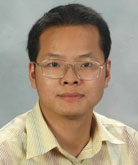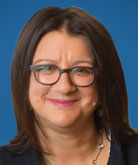Secure Communication

Xingquan “Hill” Zhu, Ph.D., a professor in the College of Engineering and Computer Science, uses AI to examine large sets of interconnected data — think of social media users linked by comments and likes. Based on these connections, Zhu builds a map, or network, of the data and uses it to make inferences and predictions. He and colleagues, for example, built a network representing clinical trials involving infectious diseases, mapping the connections between thousands of researchers and diseases. He plans to use it to predict which trials will terminate early. In another project, he developed AI to analyze health records to anticipate which hospital patients will be readmitted. He also works on detecting changes in data, like temperature, collected continuously by sensors. Zhu recently received a $652,850 grant from the National Science Foundation for his work in the Acquisition of Artificial Intelligence and Deep Learning (AIDL) Training and Research Laboratory.

Dimitris Pados, Ph.D., is developing new wireless technology that allows a team of machines to communicate dynamically with no human intervention, even in problematic places such as underwater. The machines sense their environments, determine the most effective means to communicate and adapt to challenges. Pados is a professor in the College of Engineering and Computer Science, an I-SENSE fellow and director of the ExtremeComms Laboratory. The project, called All-spectrum Interference-avoiding Communications: Theory and Software-defined-radio Implementations, received a grant for $25,000 from the Air Force Research Laboratory.
Stella Batalama, Ph.D., the dean and professor of the College of Engineering and Computer Science, is designing a first-of-its-kind software-defined testbed for real-time undersea wireless communication that can be used for commercial, scientific and a variety of military applications; ranging from monitoring subsea machinery to disaster prevention. The software is designed to maximize flexibility and minimize form-factor and cost for modules of the undersea network. Batalama received a $500,000 grant from the National Science Foundation for the Cognitive Networking of the Oceans: Localization and Tracking Fundamentals project.

